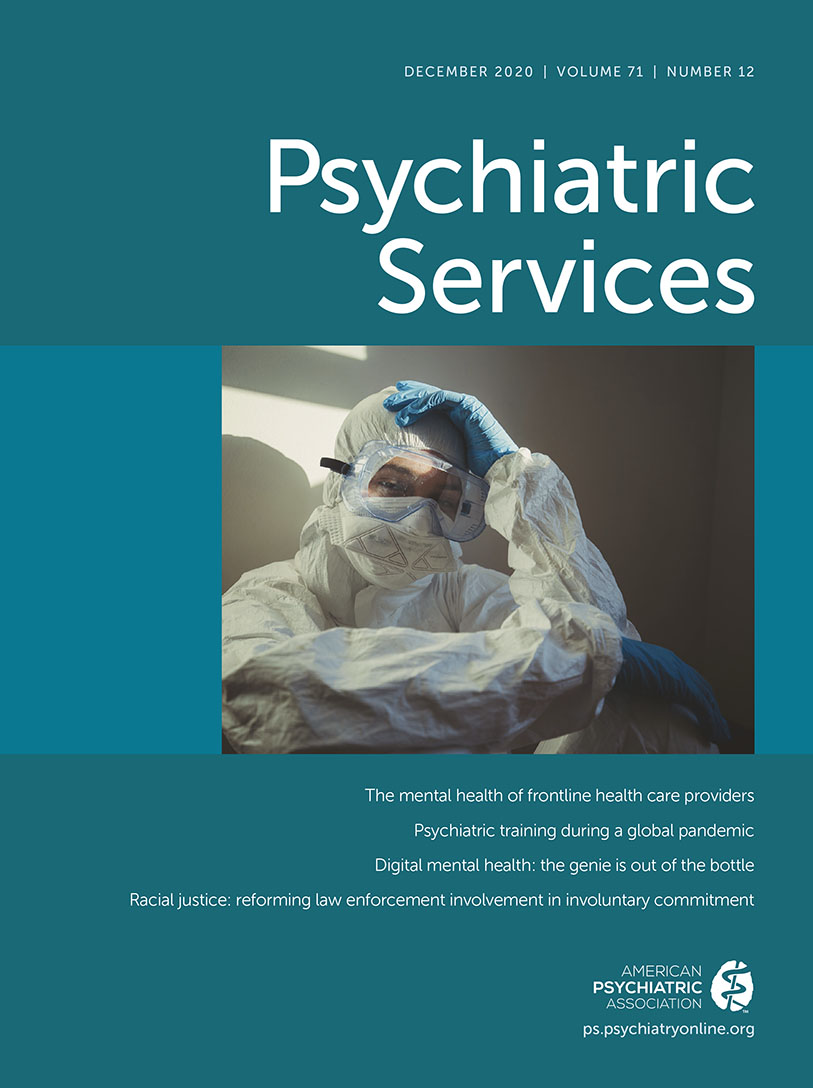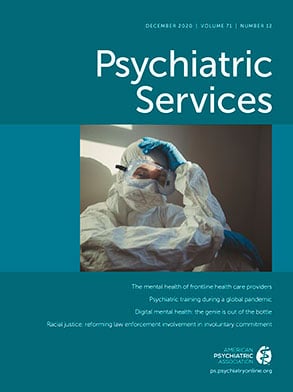Suicide is a national public health concern, with over 45,000 Americans and 6,139 veterans dying by suicide in 2017, according to the 2019 National Veteran Suicide Prevention Annual Report. Providers, community members, and loved ones are vital partners in bringing to fruition the U.S. Department of Veterans Affairs’ (VA) National Strategy for Preventing Veteran Suicide by implementing a public health approach combining community-based prevention and clinical intervention strategies. All health care systems are called to implement the Quadruple Aim, focused on provision of care that is cost efficient, produces high-quality outcomes, enhances patient satisfaction, and improves clinical provider experience. In alignment with the Quadruple Aim, Warren and Smithkors’s (
1) recent critique of suicide prevention in the VA includes critical concerns about clinician burnout, therapeutic alliance, staffing, and open-access. Appropriately implemented staffing and open-access processes are indeed needed to fully implement evidence-based practices, the VA’s National Strategy, and the Quadruple Aim. Below, we highlight the important role of fidelity in implementing staffing and access models to ensure the highest-quality suicide prevention programs.
Staffing
Delivery of quality health care in any specialty requires appropriate staffing levels. This is no different for mental health and suicide prevention (
2–
4). Mental health staffing enhancements have been associated with decreases in suicide rates among VA patients in regions where mental health outpatient staffing increases were greatest (
2). Increases in hospital staffing and nonsecondary mental health service capacity, combined with reengagement of those who discontinue care, would avert 28% of suicide attempts and 29% of suicides (
3). Total outpatient staffing ratios are also predictive of mental health access and quality (
4).
The VA has recommended a minimum benchmark for suicide prevention staffing at 0.1 full-time equivalent employees (FTEEs) (i.e., suicide prevention coordinator or care manager) per 1,000 veterans enrolled in VA health care, whereas the minimum outpatient mental health staffing ratio is 7.72 mental health FTEEs per 1,000 veterans engaged in outpatient mental health care. As of the first quarter of fiscal year (FY) 2020, 24.3% of VA facilities met the recommended minimum staffing level for suicide prevention, and 42.4% of health care systems met the minimum outpatient mental health staffing level. The VA has made progress with its 2017–2019 Mental Health Hiring Initiative, accomplishing its goal of 1,000 net hires. The VA also expanded this initiative in 2018 to focus on retention of mental health staff. From June 2017 through January 2019, the VA hired 3,956 mental health providers for a net increase of 1,045 providers. Since January 2019, the Veterans Health Administration (VHA) has hired 2,091 more mental health providers, for an additional net increase of 709 providers. This expansion equates to a total of 6,047 hires between June 2017 and December 2019, with a net increase of 1,754 providers, including psychiatrists, psychologists, social workers, nurses, licensed professional mental health counselors, licensed marriage and family therapists, peer support specialists, and Veterans Crisis Line responders.
However, the number of veterans served in mental health continues to grow. In FY 2006, 20% of veterans in the VHA received mental health services, contributing to 10.7 million total encounters. In contrast, 29% of veterans in the VHA received these services in FY 2019, representing over 21.8 million encounters in VA mental health programs. Occasional hiring initiatives will be insufficient to sustain the needs of this growing population. Decreased staffing levels may lead to burnout, which can affect provider satisfaction, a critical part of implementing the Quadruple Aim. Ensuring each VA health care system is adequately staffed is key to accomplishing the National Strategy and to supporting implementation of evidence-based practices, including universal screening, in alignment with the 2019 VA/Department of Defense Clinical Practice Guideline for the Assessment and Management of Patients at Risk for Suicide.
Open Access
Adequate staffing levels are required to appropriately implement access to services. Access to quality health care services is a national public health concern, and the availability of same-day services is shown to improve early engagement in and treatment of mental health concerns. In 2016, the VA launched the My VA Access initiative, and by 2017, same-day access to mental health and primary care had been established. In 2017, the VA furthermore required tripartite access to mental health services and extended same-day services to substance use disorder treatment settings. Tripartite access ensures not only access to urgent care (e.g., for crisis situations) but also rapid engagement to care for new patients and sustained access for full treatment (e.g., a full course of evidence-based psychotherapy). All three types of access are foundational to obtaining quality care outcomes and are crucial components of suicide prevention.
Warren and Smithkors (
1) criticize the VA’s implementation of same-day access models and productivity standards as methods that fuel clinician burnout and erode patient-provider relationships.
Incorrectly implemented open access and productivity monitoring models burden providers and impose upon therapeutic interventions with veterans; however, models run in fidelity with national standards do not have negative impacts. National standards include practical guidance on implementation that does not fuel provider burnout. For example, one model for a general mental health clinic outlined that all licensed independent providers have at least one open-access appointment built into their daily appointment grid and that open access is offered by multiple providers throughout the day. If a provider’s appointment grid includes 6 hours per day for appointments, 5 hours would be scheduled and 1 hour would be held for an open-access appointment. Thus, a provider has time reserved for the appointment, and open access does not result in overbooking, a burden to the provider. In well-run systems, open-access models make initiation of care expeditious and ensure continuity of follow-up with a patient’s treatment team—a patient-centered approach that reduces wait time and promotes access to care (
5–
8). Furthermore, the VA’s mental health productivity directive cites the critical importance of not only examining areas of underproductivity but also monitoring for overproductivity and burnout, in alignment with Warren and Smithkors’s concerns. Key to the success of open-access models is adherence to model fidelity, which requires appropriate staffing and clinic setup strategies. When done well, at a time of critical need, open-access models afford providers the time and space to understand the full narrative of a veteran’s life and increase the likelihood that these important discussions occur with a veteran’s own treating providers. This is truly patient-centered care.

